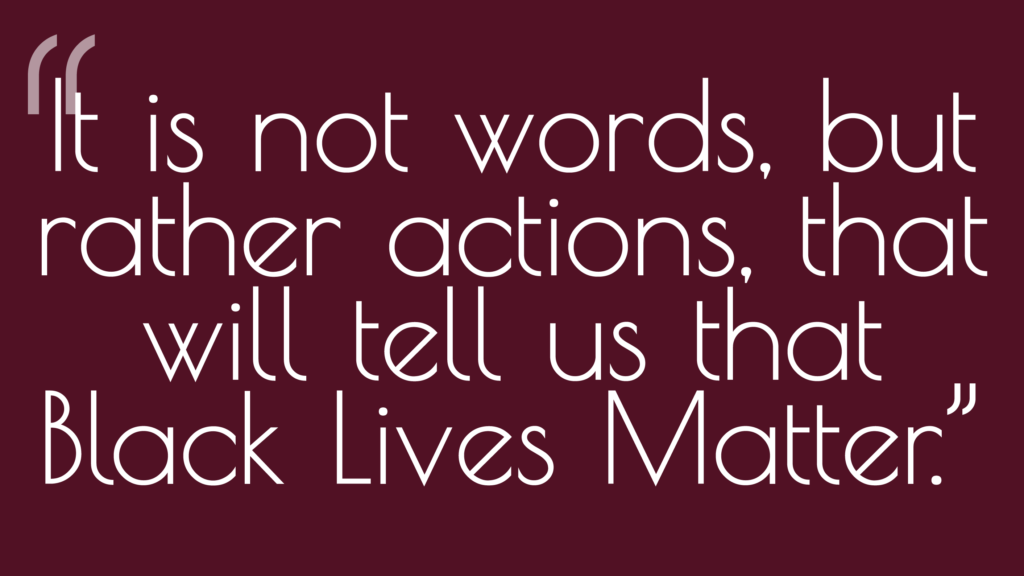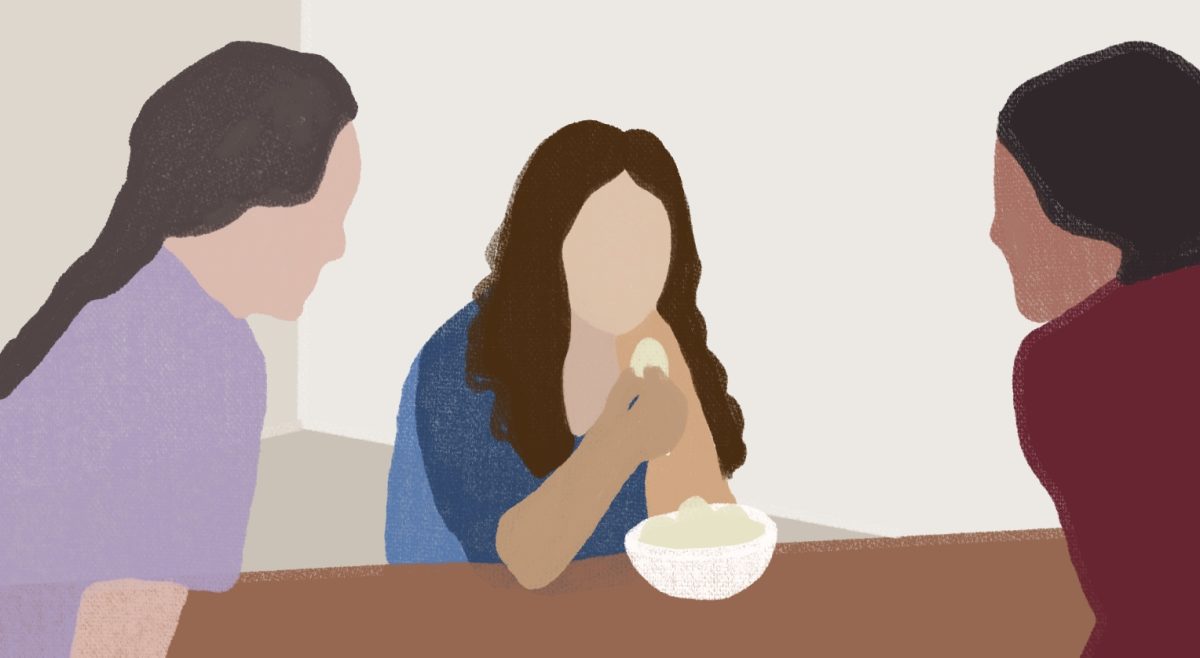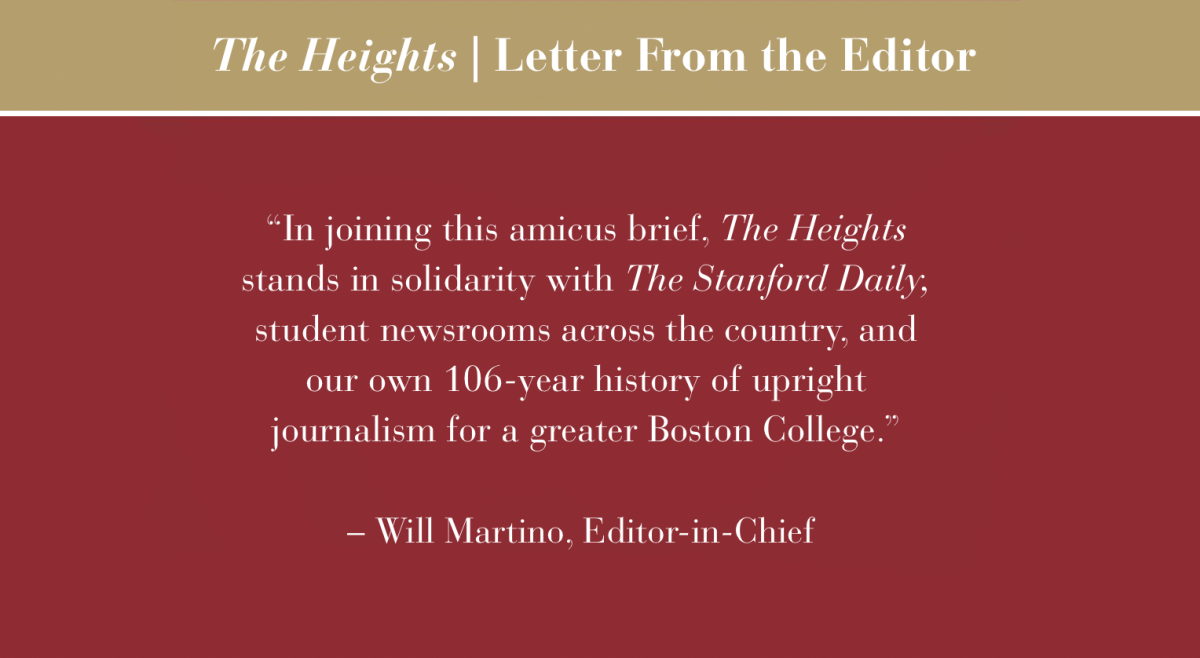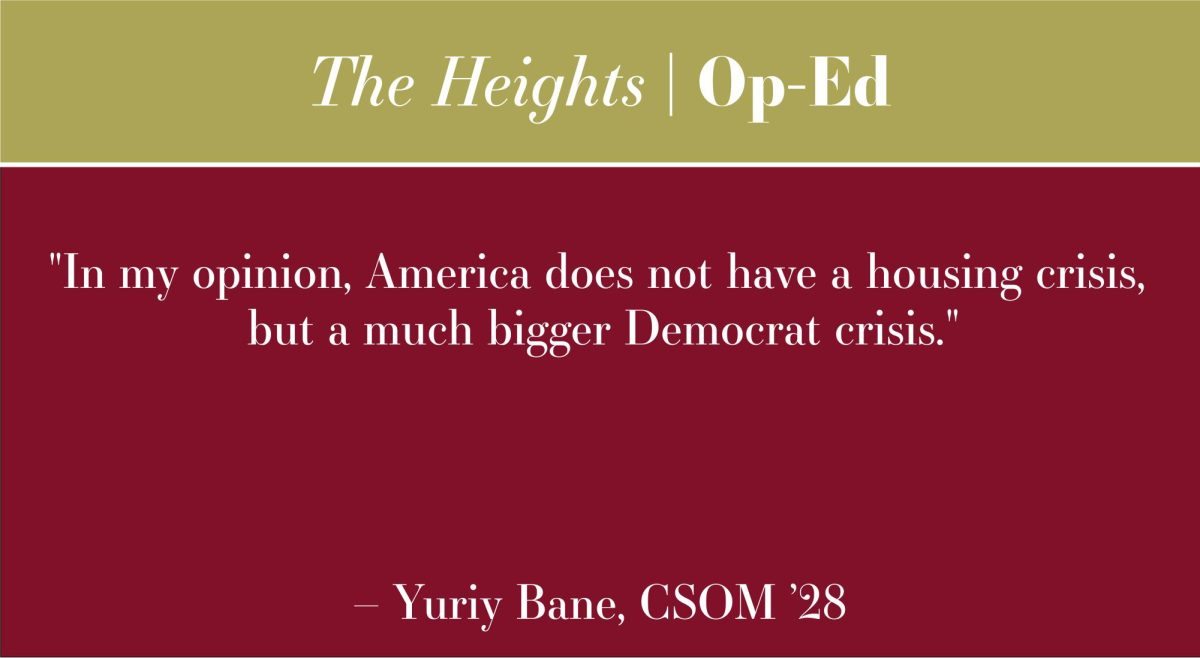Friday’s protest was aptly named: “Silence is Still Violence.” The key word is ‘Still.’ On Friday, all of us gathered, and rightly so, to march against a climate that students of color have repeatedly identified as hostile—so hostile, in fact, that last week’s manifestation of violence involved vandalism not in a bathroom stall, nor in a hallway, nor in a dining hall, nor in a classroom. But rather, this manifestation of violence was so hostile that it occurred right on the door to a student’s living space, threatening not only the inhabitants inside, but threatening every single person who identifies as a person of color. “Black Lives Do Not Matter.” And if that threat wasn’t dire enough, the violence continued—this time virtually. If the meaning was not clear, the insult was as conspicuous as ever: “I like my steak and cheese like I like my slaves.”
The key word is ‘Still.’ The title hearkens back to the last time we had to march for the dignity of marginalized persons—this time members of the queer community. It was called “Silence is Violence.” This time the vandalism occurred in the Mod Lot. Once again there was a solemn march from McElroy to Lower. Once again there was a letter authored by Dean of Students Tom Mogan—though, this time, it was to The Heights—denouncing intolerance toward any individuals on campus. Once again, it apparently wasn’t enough.
They key word is ‘Still.’ The letter Thursday by Provost David Quigley encourages faculty regardless of expertise or course responsibilities to grapple with “questions of race, difference, justice, and the common good” with their students. The letter by Dr. Barbara Jones and Dean Mogan to the student body pledges that, this time, the University’s reaction to incidents of hate will be substantial. They tell us to look to the new 10-year strategic plan. In this plan, Jones and Mogan tell us, BC has committed itself to enhancing “the culture of care and welcome for all, including support for socioeconomic and racial diversity within the campus community.” An examination of the website devoted to the strategic plan, however, shows exactly how much a priority it is. The quote is not explicitly taken from any of the plan’s four strategic directions. Instead, it is an initiative within Strategic Direction II, and the full content describing the initiative is the following: “The University’s student body and workforce are substantially more diverse than a generation ago, yet challenges remain. Boston College will evaluate and strengthen efforts to support diverse communities on campus and to provide care and opportunity for all who study and work at the University.” That’s it.
The key word is ‘Still’ because we have no idea what BC administrators mean. Though, what students of color mean has been obvious for decades. In 1988—that is, 29 years ago—Don Brown, then the AHANA director, responded to the question, “What do you see specifically as the biggest problem or problems facing the AHANA community on this campus?” His answer:
“Subtle forms of racism, that’s a problem that’s being verbalized more and more. Feelings related to that, feelings of not feeling a part of the environment. A good number of AHANA do not feel a part of the BC community. That’s been a perennial problem, and that’s not a problem unique to Boston College. The challenge of the university is to really begin developing strategies aimed at making AHANA students feel welcome. It’s not enough to place a focus on recruiting AHANA students. I think the real challenge is to ensure that once those students begin matriculating that they feel welcomed.”
The key word is ‘Still.’ Last year, when I was the executive director of the Graduate Student Association for the 2016-17 academic year, I worked with a team of colleagues composed of administrators and students from the Lynch School of Education in order to form a program called “Action Tank.” The goal of the program was to facilitate “an open conversation among administrators, faculty, staff, and students around topics commonly grouped under the heading of ‘diversity and inclusion.’” For many students, this grouping summons issues related to racism, sexism, heterosexism, and other forms of structural oppression.
The program never came to be. The reason why? Because no administrator in the Division of Student Affairs would be allowed to join in the conversation in their capacity as administrators. (I was told that administrators could come in a non-representative capacity. But what does that mean?) Instead, I was told both by the Vice President for Student Affairs and the Provost that students should have a structured conversation on their own, and then bring the results to administrators in order for them to examine the results. But this is a mistaken view of reality: students of color are already talking. Now, we’re ready for action, and that involves conversations with decision makers in a spirit of accountability. I did not agree to turn my program into another conversation that went nowhere.
And so, the key word is still ‘Still.’ When we marched, we marched for the noble ideals of justice and reconciliation that embody our ideals as a Jesuit and Catholic university. Myself, I’m interested in the days that follow. Still, after 30 years—and perhaps after another 10 given this strategic plan—it is not words, but rather actions, that will tell us that Black Lives Matter.
Craig A. Ford, Jr., GMCAS ’22, is a doctoral candidate in Theological Ethics at Boston College.
Featured Image by Zoe Fanning / Heights Editor













